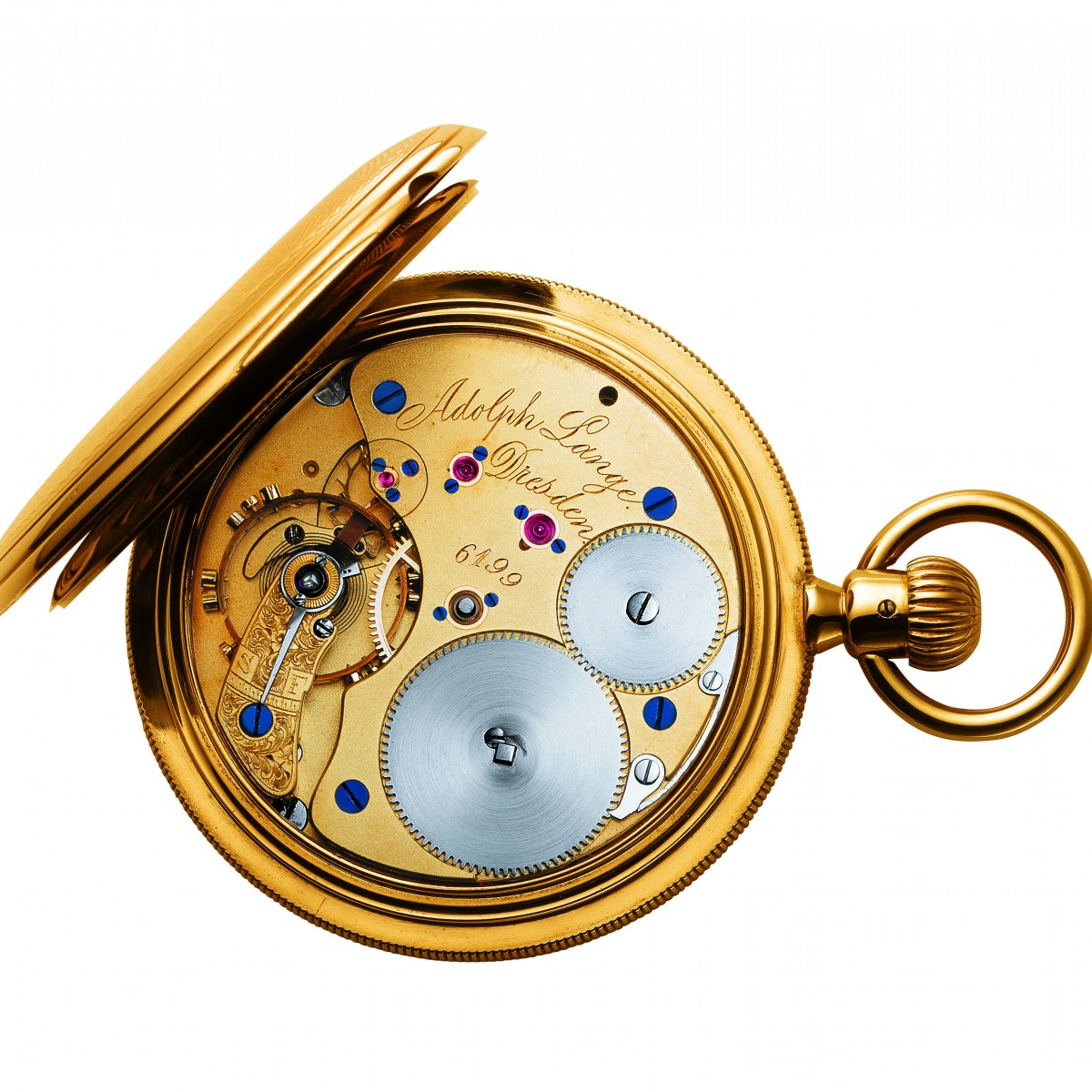Born in Dresden in 1815, Ferdinand Adolph Lange was raised by Johann Christian Friedrich Gutkaes, horologist to the Court of Saxony, and inherited his tutor’s passion. He travelled first to Switzerland then to Paris, where he honed his skills under Joseph-Thaddeus Winnerl, a former pupil of Breguet. On his return to Dresden in 1840, he worked with Gutkaes, whose daughter he married in 1842, as a watchmaker and overseeing production. Gutkaes was supplying precision regulators to various national observatories, but Ferdinand Adolph Lange had ambitions of his own, and was intent on using the experience gained during his time as a journeyman to set up his own factory. His persistence, not to mention his powers of persuasion, paid off when the government of the King of Saxony agreed to financially support his plan which, through the establishment of a completely new industry, promised desperately needed employment in the impoverished town of Glashütte. Ferdinand Adolph Lange didn’t embark on this adventure alone. With him were Adolf Schneider - who was married to another of Gutkaes’s daughters and had been apprenticed to him at the same time as Lange -, and Lange’s own son-in-law, Julius Assmann. The three men, together with Moritz Grossmann, would transform Glashütte into a world-class centre for watchmaking.
From the time Lange & Cie was established in 1845, Glashütte took its place on the world horological stage, weathering even the most difficult circumstances. Thanks to this solid industrial enterprise, watchmaking factories were soon springing up, along with the specialists who supplied them and who thrived in the presence of the future great names in German watchmaking. The Saxon ministry of the interior had agreed to finance Lange’s scheme on condition it offer apprenticeships for fifteen youths; Lange & Cie trained them not as all-round watchmakers but as specialists who would provide a high level of skill. When a watchmaking school opened in 1878, it attracted students from beyond Germany who took the town’s reputation into the world. The inventor of the Glashütte lever escapement and of the smallest movement for a lady’s watch (a diminutive 25mm); mayor of Glashütte between 1849 and 1867; elected to the Saxon parliament in 1869, Ferdinand Adolph Lange laid the foundations for Glashütte to become a renowned centre of watchmaking (“Made in Glashütte” became a protected designation of origin in 2022). When he died, his sons took over the company which became A. Lange & Söhne.
1844
Invention of the Glashütte lever escapement.
1845
Establishment of the watch factory "A. Lange, Dresden" and of the Glashütte watchmaking industry.

